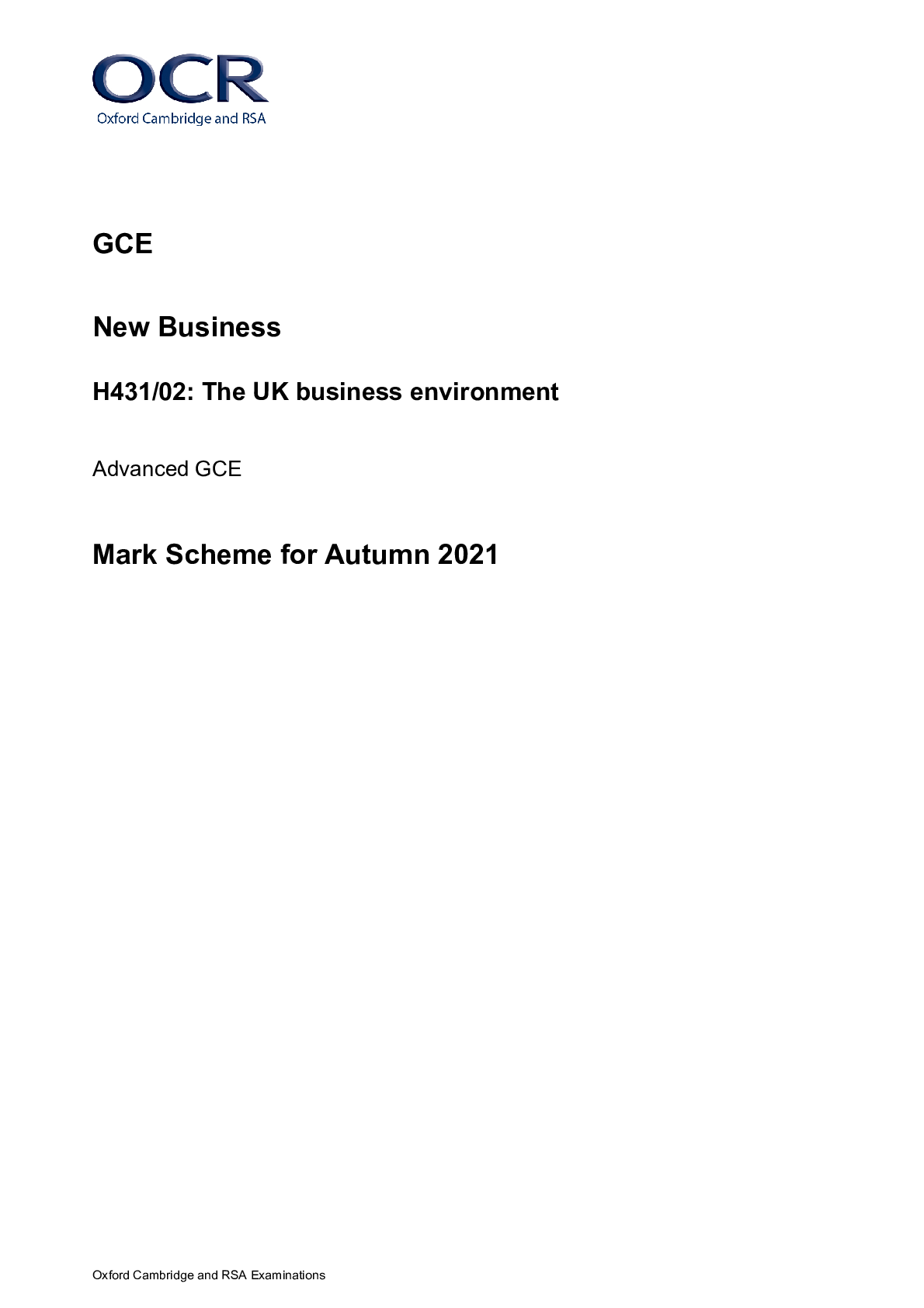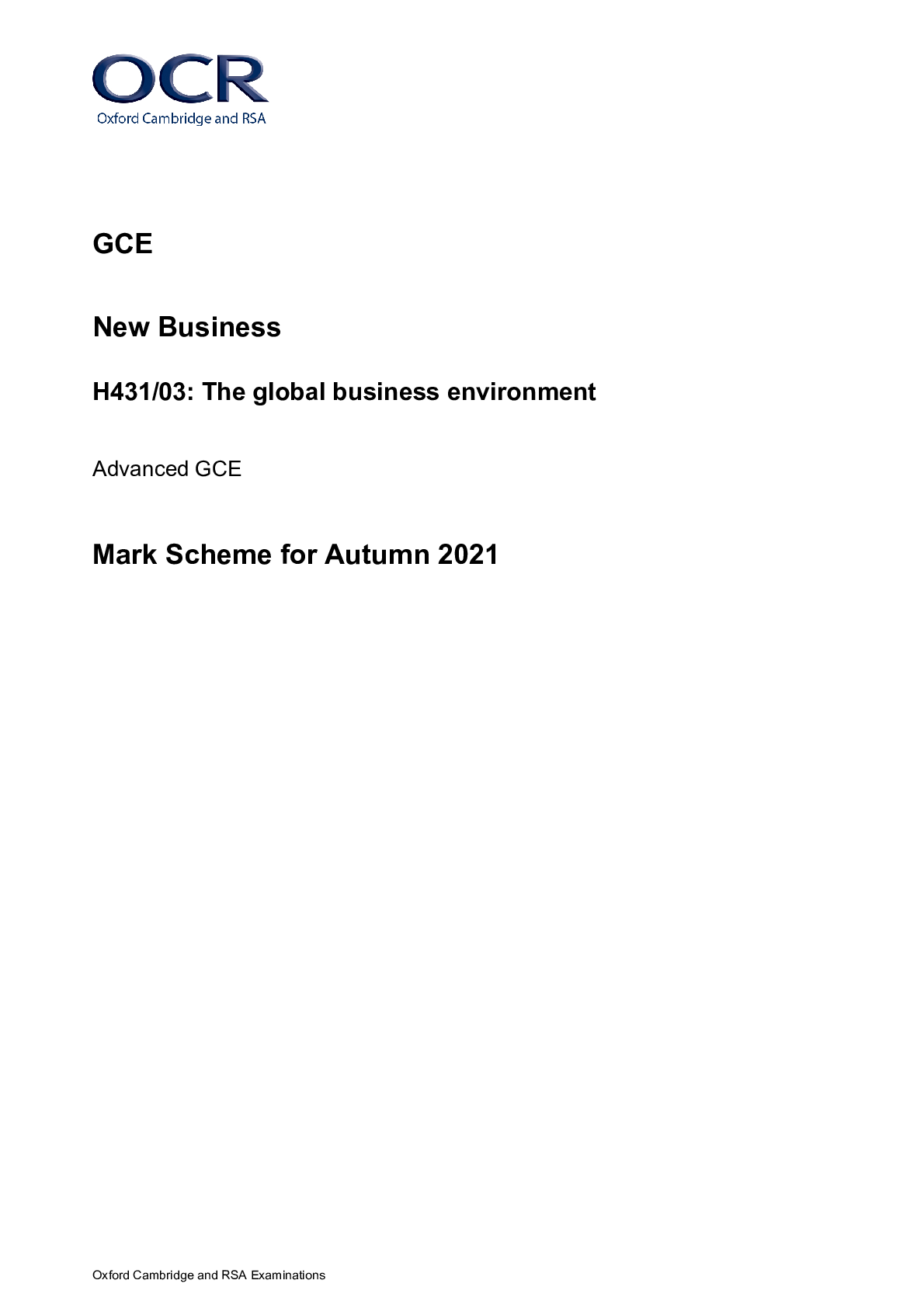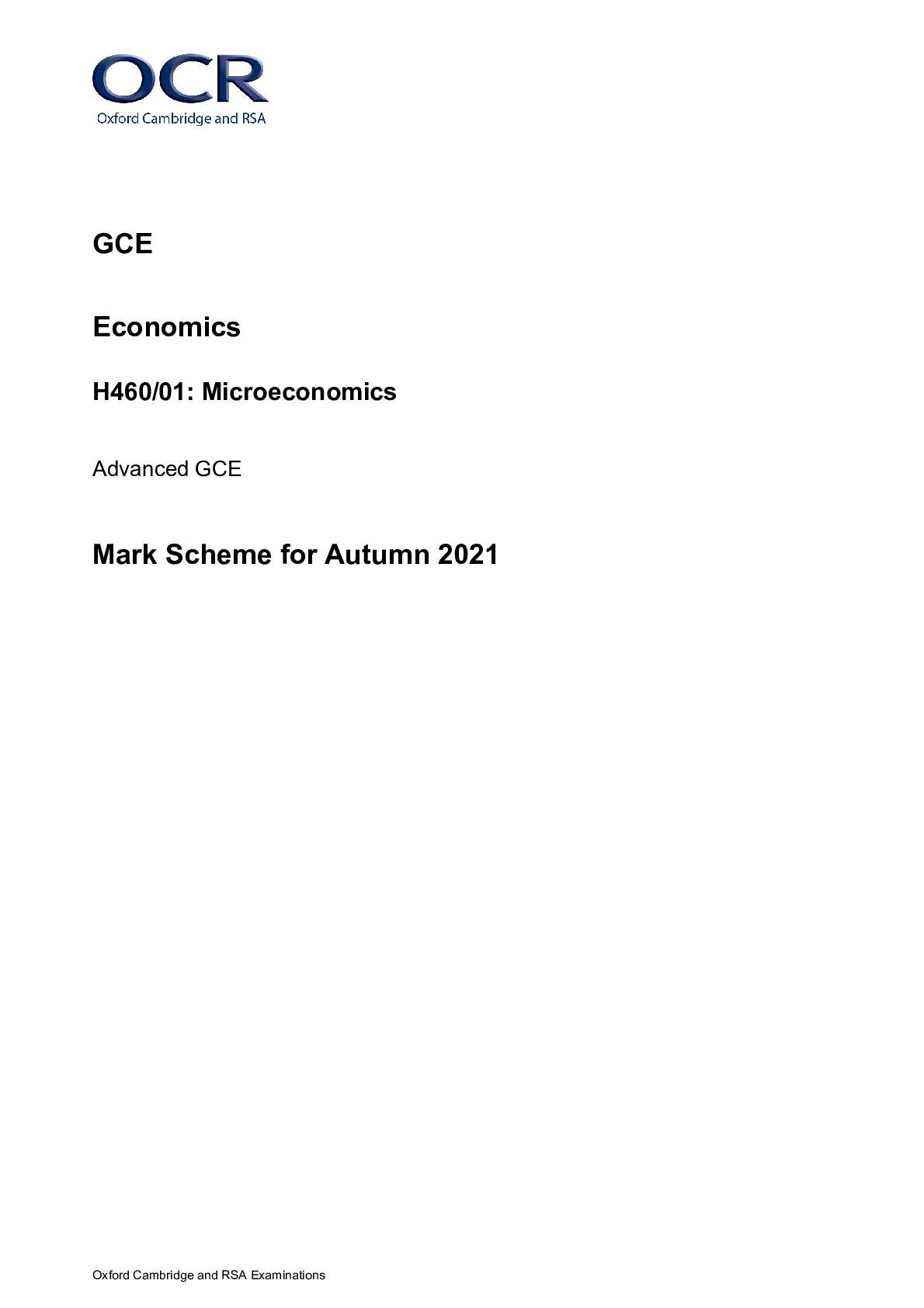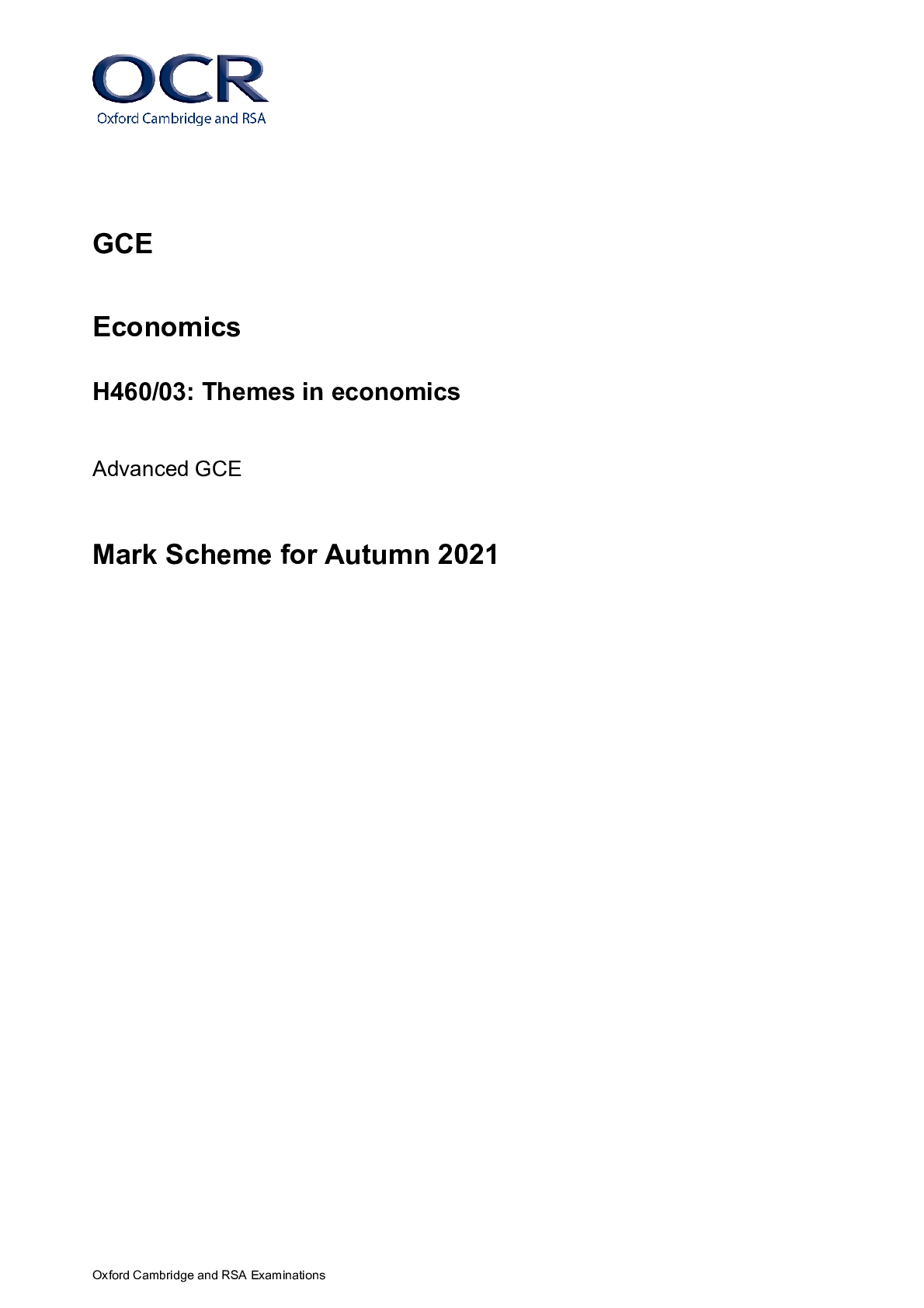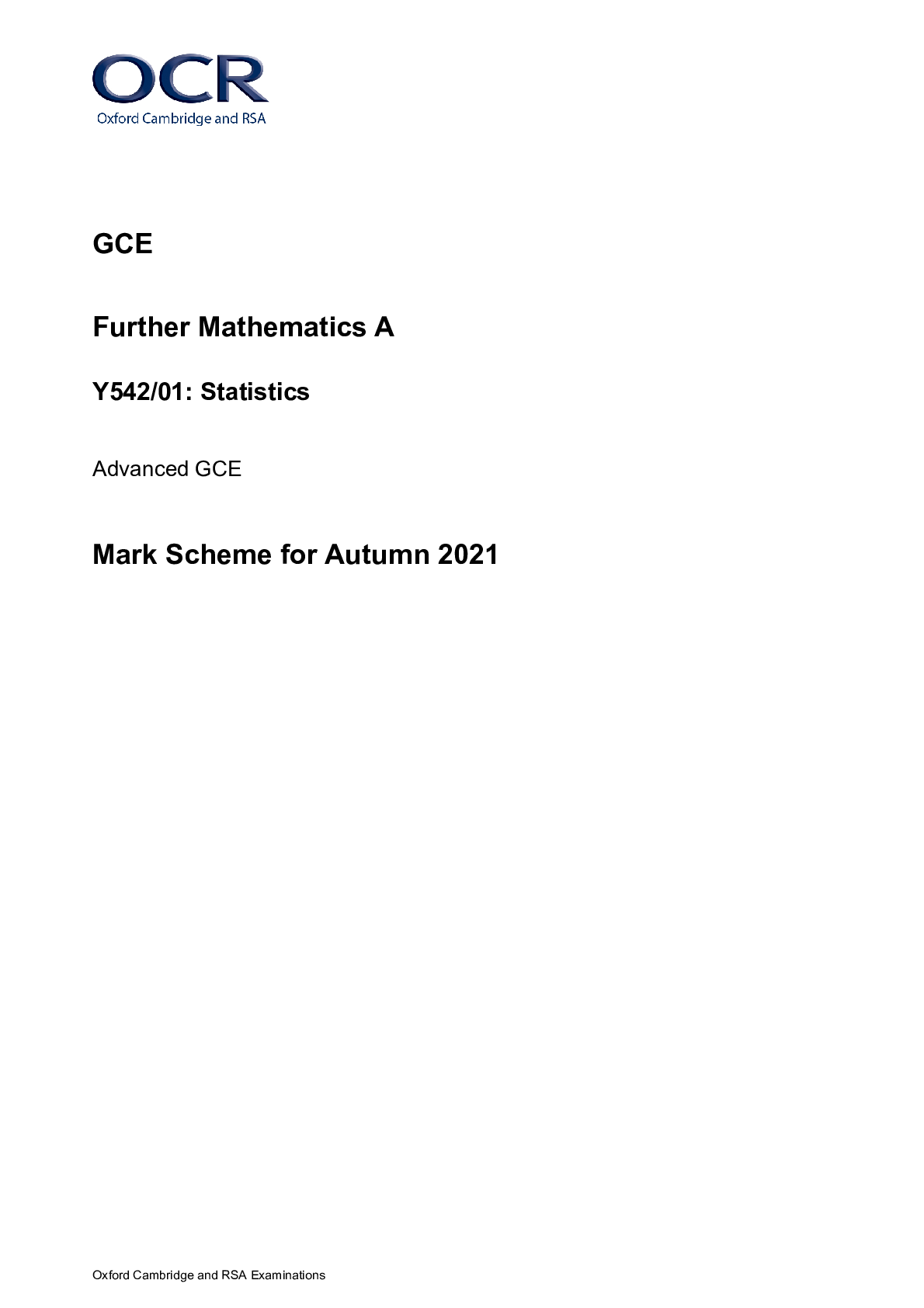History > MARK SCHEME > GCE History A Y308/01: The Catholic Reformation 1492-1610 Advanced GCE Mark Scheme for November 2020 (All)
GCE History A Y308/01: The Catholic Reformation 1492-1610 Advanced GCE Mark Scheme for November 2020
Document Content and Description Below
GCE History A Y308/01: The Catholic Reformation 1492-1610 Advanced GCE Mark Scheme for November 2020 Oxford Cambridge and RSA Examinations GCE History A Y308/01: The Catholic Reformation 1492-16... 10 Advanced GCE Mark Scheme for November 2020Oxford Cambridge and RSA Examinations OCR (Oxford Cambridge and RSA) is a leading UK awarding body, providing a wide range of qualifications to meet the needs of candidates of all ages and abilities. OCR qualifications include AS/A Levels, Diplomas, GCSEs, Cambridge Nationals, Cambridge Technicals, Functional Skills, Key Skills, Entry Level qualifications, NVQs and vocational qualifications in areas such as IT, business, languages, teaching/training, administration and secretarial skills. It is also responsible for developing new specifications to meet national requirements and the needs of students and teachers. OCR is a not-for-profit organisation; any surplus made is invested back into the establishment to help towards the development of qualifications and support, which keep pace with the changing needs of today’s society. This mark scheme is published as an aid to teachers and students, to indicate the requirements of the examination. It shows the basis on which marks were awarded by examiners. It does not indicate the details of the discussions which took place at an examiners’ meeting before marking commenced. All examiners are instructed that alternative correct answers and unexpected approaches in candidates’ scripts must be given marks that fairly reflect the relevant knowledge and skills demonstrated. Mark schemes should be read in conjunction with the published question papers and the report on the examination. © OCR 2020Y308/01 Mark Scheme November 2020 2 Annotations Annotation Meaning of annotation Blank Page Highlight Off-page comment Assertion Analysis Evaluation Explanation Factor Illustrates/Describes Irrelevant, a significant amount of material that does not answer the question Judgement Knowledge and understanding Provenance Simple comment Unclear View Synthesis Continuity/ChangeY308/01 Mark Scheme November 2020 3 Subject Specific Marking Instructions Section A Mark Scheme Question Answer Mark Guidance 1 Evaluate the interpretations in both of the two passages and explain which you think is more convincing as an explanation of the debate and argument at the sessions of the Council of Trent. In locating the Interpretations within the wider historical debate, answers might argue that Interpretation A characterises the debate and argument as full of division and frequently disrupted. It sees the debate as reactive, and focused entirely on combatting Protestantism. • In evaluating Interpretation A, answers might argue that it is valid because Paul III’s urgency in finally convening a council came because of the rapid success of Protestantism in Germany. • Answers might argue that it is valid because there was a general lack of will to either establish or see through the council, for example taking ten years to even get it set up, and the sessions being frequently disrupted and postponed because of other international priorities and/or changes of Pope. • Answers might argue that it is valid because attendance was frequently poor, for example there were only 31 bishops in attendance when it opened in December 1545. • Answers might argue that it is valid because, Charles V sought the Council to reform abuses within the Church, Paul III was determined to set 30 • No set answer is expected • At Level 5 and above answers will evaluate both interpretations, locating them within the wider historical debate about the issue and using their own knowledge, and reach a balanced judgement as to which they consider the most convincing about the issue in the question. • To be valid, judgements must be supported by relevant and accurate material. • Knowledge must not be credited in isolation, it should only be credited where it is used to analyse and evaluate the interpretations, in line with descriptions in the levels mark schemeY308/01 Mark Scheme November 2020 4 an agenda that was focused on discerning acceptable Catholic belief from heretical beliefs. • Answers might argue that it is valid because no single person was in attendance through the whole Council, suggesting there was a lack of continuity. • Answers might argue that the interpretation is invalid because the Tridentine Decrees ultimately extended beyond statements of belief to include Church reform, for example there was extensive debate on the issue of discipline within the Church & this resulted in firm Decrees that stated the obligations of priests and bishops and how this was to be ‘policed’. In locating the Interpretations within the wider historical debate, answers might argue that Interpretation B sees Trent as having weaknesses, but in general as having productive debate, sometimes against the odds, which focused on renewal and new ideas. • In evaluating Interpretation B, answers might argue that the interpretation is valid because the Tridentine decrees established seminaries, which focused on a renewal of the priesthood. • Answers might argue that it is valid because Paul III established an attendance-based, individual voting system to combat the risks of block voting and protect the Council, to a degree, from international politics. • Answers might argue that the overall balance of the Tridentine Decrees is a clear signal that the debate was productive, and ranged well beyond statements of belief into practical action, for example the clear re-definition of the role of a bishop as a type of local Church ‘manager’.Y308/01 Mark Scheme November 2020 5 • Answers might argue that the interpretation is invalid because many of the statements of belief and practical solutions (e.g. the type of training priests should receive) were conservative in nature. • Answers might argue that the interpretation is invalid because a huge amount of time was devoted to debating and agreeing on statements of belief, for example over the issue of salvation. • Answers might argue that it is invalid because many of the practical outcomes of the decrees, for example in prescribing particular religious texts and prayerbooks, in fact came down to the issue of uniformity of belief and combatting heresy.Y308/01 Mark Scheme November 2020 6 Section B Mark Scheme Question Answer Mark Guidance 2* ‘The clergy and laity responded to the Catholic Reformation in very different ways throughout the period from 1492 to 1610.’ How far do you agree? In supporting the hypothesis in the question, it might be argued that the Catholic Reformation saw a divergence of the clergy from the laity. • Answers might consider the greater emphasis on the training of priests and a codification of their priestly duties, overseen by a managerial bishop, which saw a professionalisation of the role of a priest, in comparison to their much more moderate expectations on the laity. • Answers might consider that clergy were expected to act as spiritual leaders and to embody Catholic Reformation beliefs, whereas the laity were expected to focus more on conformist behaviour and morals. • Answers might consider the success of the Jesuits and the growing evangelism and sense of mission amongst the clergy. • Answers might consider the importance of the clergy in spreading Catholic Reformation ideals across Europe and the wider world, whereas the laity’s experience of the Catholic Reformation tended to be confined to a very local area and to be much more personal. • Answers might consider that the clergy were expected to be actively involved in shaping the Catholic Reformation Church (for example, in reform in their own parishes – for example Borromeo – in the reform of culture, in the development of spirituality) whereas the laity were 25 • No set answer is expected • At higher levels answers might establish criteria against which to judge • To be valid, judgements must be supported by relevant and accurate material. • Knowledge must not be credited in isolation; it should only be credited where it is used as the basis for analysis and evaluation, in line with descriptions in the levels mark scheme.Y308/01 Mark Scheme November 2020 7 largely expected to be obedient consumers of doctrine. • Answers might consider that the reform of the religious orders made far greater demands of monks, nuns and friars than had been made previously, distancing them from the laity. In challenging the hypothesis in the question, answers might consider that there were similarities in the way that clergy and laity responded to the developments associated with the Catholic Reformation. • Answers might consider the emphasis on lay spirituality, which saw a greater emphasis on personal faith and religious experiences for both clergy and laity. • Answers might consider that both clergy and laity had to be cognisant of the threat of the Inquisition for behaviour and statements of belief that did not conform to Church expectations. • Answers might consider that outside urban centres, both clergy and laity could often be ambivalent to religious renewal and change was very slow. • Answers might consider that confraternities and the reform of elements popular culture such as festivals and plays brought popular culture and the clergy closer together in the way they responded to the demands of the Catholic Reformation. • Answers might consider that there is evidence in Inquisition records that the extent of religious knowledge and observance of expected religious practices increased amongst both the clergy and the laity. • Answers might consider that both clergy and laity had to proactively renounce and avoid any beliefs that could be considered heretical,Y308/01 Mark Scheme November 2020 8 whereas there had previously been less uniformity and clarity of doctrine in many areas. 3* ‘Secular rulers were more interested in a Counter-Reformation against Protestantism than they were in a Catholic revival in the period from 1492 to 1610.’ How far do you agree? In supporting the hypothesis in the question, it might be argued that secular rulers showed little interest in the issue of Catholic revival, until the rise of Protestantism threatened their authority. • Answers might consider that Charles V’s more (initially) conciliatory tone towards Protestantism can be explained by his desire to restore unity to the Holy Roman Empire and thus secure his own authority. This was a form of CounterReformation because it aimed to bring Protestants back into the Church. • Answers might consider that Philip II developed the use of the Inquisition in Spain, building on its use under his predecessors, introduced an Index of banned books, and oversaw attacks on suspected Protestants/heretics as well as conversos and moriscos. • Answers might consider that in France the Catholic Reformation was characterised by the Wars of Religion, where the state actively combatted Protestantism by force and those close to the monarch encouraged grassroots civil conflict on the basis of religious affiliation. • Answers might consider that the emphasis of the Council of Trent, in which attendees represented the interests of their secular ruler as well as the Church, was a clarification of 25 • No set answer is expected • At higher levels answers might establish criteria against which to judge • To be valid, judgements must be supported by relevant and accurate material. • Knowledge must not be credited in isolation; it should only be credited where it is used as the basis for analysis and evaluation, in line with descriptions in the levels mark scheme.Y308/01 Mark Scheme November 2020 9 Catholic belief in the face of the Protestant challenge. • Answers might consider that the use of the Inquisition and heresy charges was widespread in Italy, for example in Rome, Florence and Venice. • Answers might consider that, prior to the secular crisis of the King’s marriage, religious policy in England was characterised by fierce repression of Protestantism with limited Church reform. In challenging the hypothesis in the question, it might be argued that secular leaders showed an interest in religious renewal as a consequence both of their personal spirituality and their desire for stability in their realms. • Answers might consider that in the planning of the Council of Trent, it was in fact Charles V who was pushing for an agenda focused on Church reform, and Paul III who wanted a response to Protestantism. • Answers might consider that Philip II was a highly spiritual individual and in his own reforms in Spain went beyond the Tridentine Decrees in seeking a renewal and strengthening of the Church. • Answers might consider that new religious orders such as the Jesuits, and spirituals like Teresa of Avila required the support of secular monarchs to survive and thrive. • Answers might consider that Christian Republicanism in Italy meant that the fortunes of the Church were seen to be bound up in the political fortunes of states and monarchs, thus leading to a long-term trend of criticisms of religious abuses and a desire for renewal from within.Y308/01 Mark Scheme November 2020 10 • Answers might consider that the Church played an important role in national and local governance, so secular rulers had an interest in renewing, reforming and strengthening the Church hierarchy and the role of local priests as this could aid their own governance, for example Philip II’s policies toward the territories in his ‘monarquia’ . • Answers might consider that secular rulers’ extensive patronage of architects and artists for religious projects suggests that they valued these as tools of spiritual renewal. 4* ‘The Catholic Reformation had a greater impact in Spain than in any other part of Europe in the period from 1492 to 1610.’ How far do you agree? In supporting the hypothesis in the question, it might be argued that Spain exemplified the enactment of Catholic Reformation policies and practices. • Answers might consider that the Inquisition was well established and active in Spain before, during and after the Catholic Reformation, taking extensive action not only against suspected heretics but also against the clergy and laity where they were not conforming with expectations. • Answers might consider that Philip II insisted on the enactment of the Tridentine Decrees in Spain, and also went beyond these in his domestic reform of the Church. • Answers might consider that Inquisition and other records show that the extent of lay and clerical religious knowledge and conformity had grown in most areas, apart from the most rural and remote. 25 • No set answer is expected • At higher levels answers might establish criteria against which to judge • To be valid, judgements must be supported by relevant and accurate material. • Knowledge must not be credited in isolation; it should only be credited where it is used as the basis for analysis and evaluation, in line with descriptions in the levels mark scheme.Y308/01 Mark Scheme November 2020 11 • Answers might consider that there was extensive reform of the religious orders in Spain as well as a significant upsurge in missionaries and spirituals. • Answers might consider that there was extensive episcopal and clerical reform in Spain and in Spanish territories. • Answers might consider that some of the most successful reforming bishops were found in Spain, for example Quiroga in Toledo and Ribera in Valencia. In challenging the hypothesis in the question, answers might argue that other regions saw a greater effect. • Answers might consider that Rome saw significant changes during the Catholic Reformation, associated with the reform and renewal of the Papacy. • Answers might consider that the Catholic Reformation had a greater impact in countries that were more directly threatened by Protestantism than Spain, for example in parts of the Holy Roman Empire or in France. • Answers might consider that the Catholic Reformation had a huge impact in the Netherlands, with the emergence of Erasmian thought, Church reforms initiated by Charles V and Philip II, and the reaction against the Protestant threat. • Answers might consider the impact of the Catholic Reformation in France, for exampleY308/01 Mark Scheme November 2020 12 in terms both of the renewal of the Church and the embracing of the new missionary zeal, for example in support for the Jesuits, as well as the severe reaction towards Protestantism for much of the period. • Answers might consider the Catholic Reformation in Eastern Europe, for example in ‘Counter-Reformation’ anti-Protestant activity in the Habsburg lands, and the influence of the Jesuits in Poland. • Answers might consider that there were many similarities across European countries in terms of the impact of the Catholic Reformation, for example in art/architecture, doctrine, reform of institutions and reaction to potential heresy – indeed, this greater degree of uniformity was intentional. • Answers might consider that documentary evidence suggests that reform was slow in many parts of Spain and that many rural areas remained largely untouched by the Catholic Reformation. It might also be noted that reform was mostly associated with Philip II as Charles V was very preoccupied with the Holy Roman Empire.OCR (Oxford Cambridge and RSA Examinations) The Triangle Building Shaftesbury Road Cambridge CB2 8EA [Show More]
Last updated: 1 year ago
Preview 1 out of 14 pages
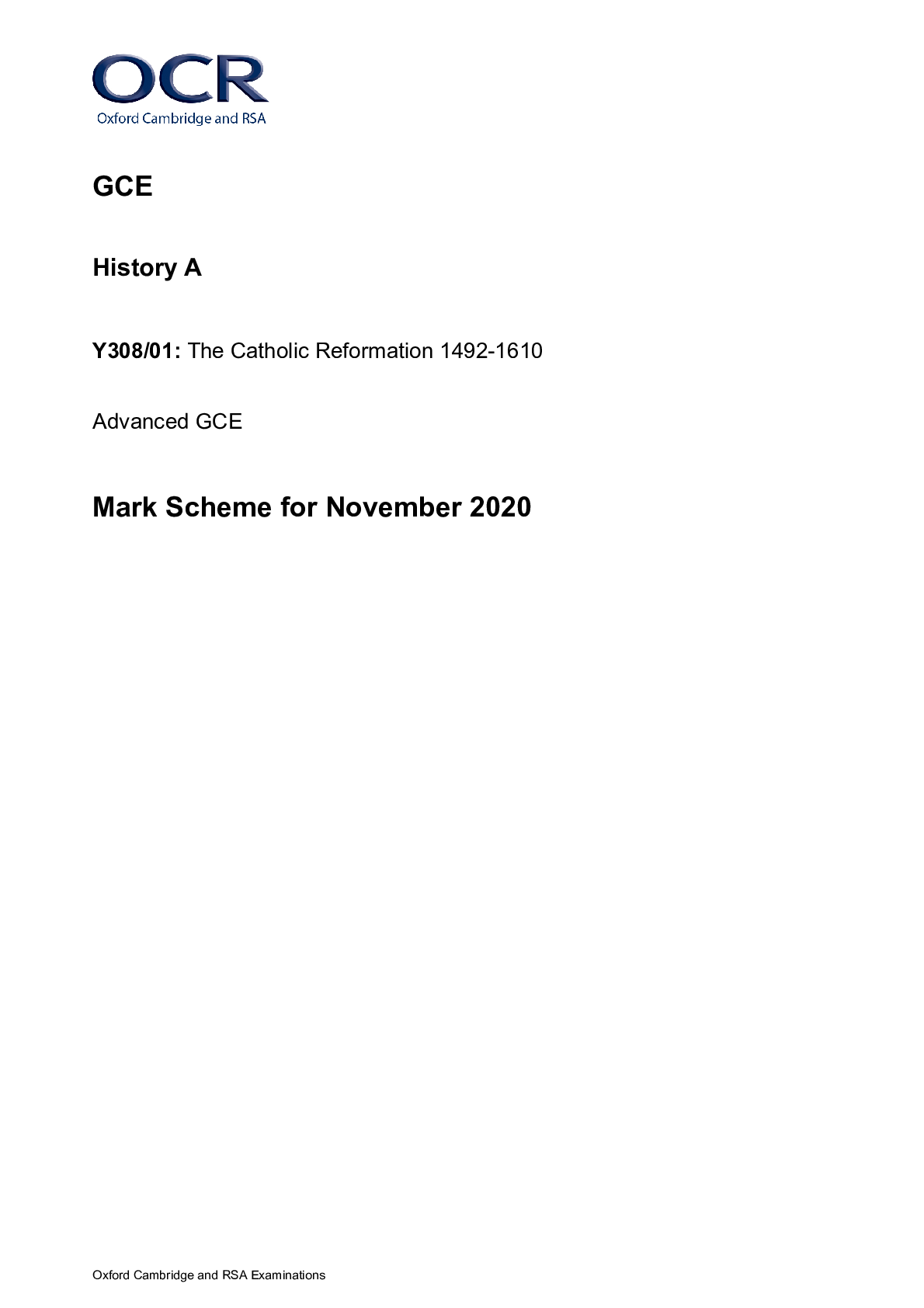
Buy this document to get the full access instantly
Instant Download Access after purchase
Add to cartInstant download
We Accept:

Reviews( 0 )
$6.50
Document information
Connected school, study & course
About the document
Uploaded On
Jul 17, 2022
Number of pages
14
Written in
Additional information
This document has been written for:
Uploaded
Jul 17, 2022
Downloads
0
Views
39



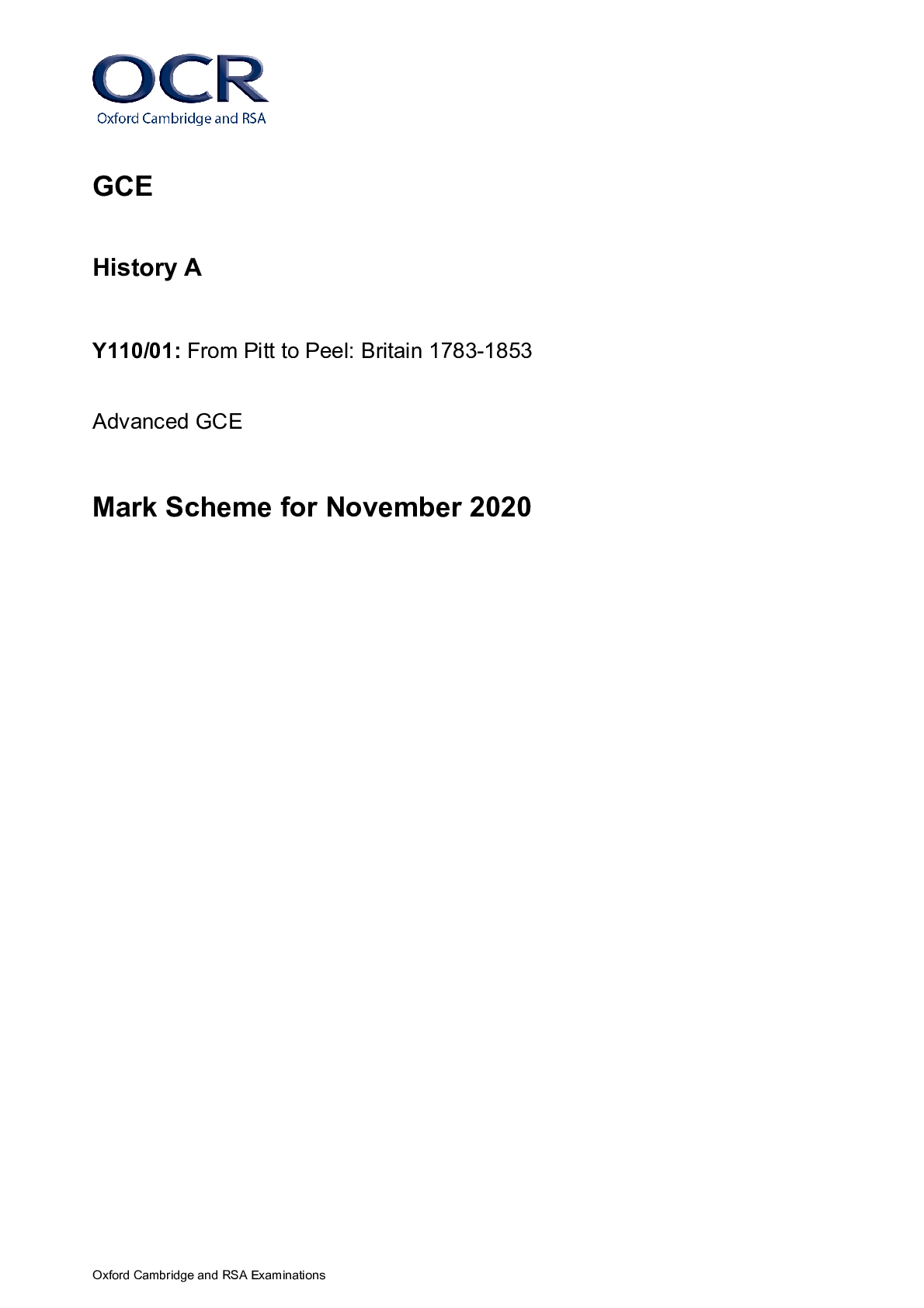
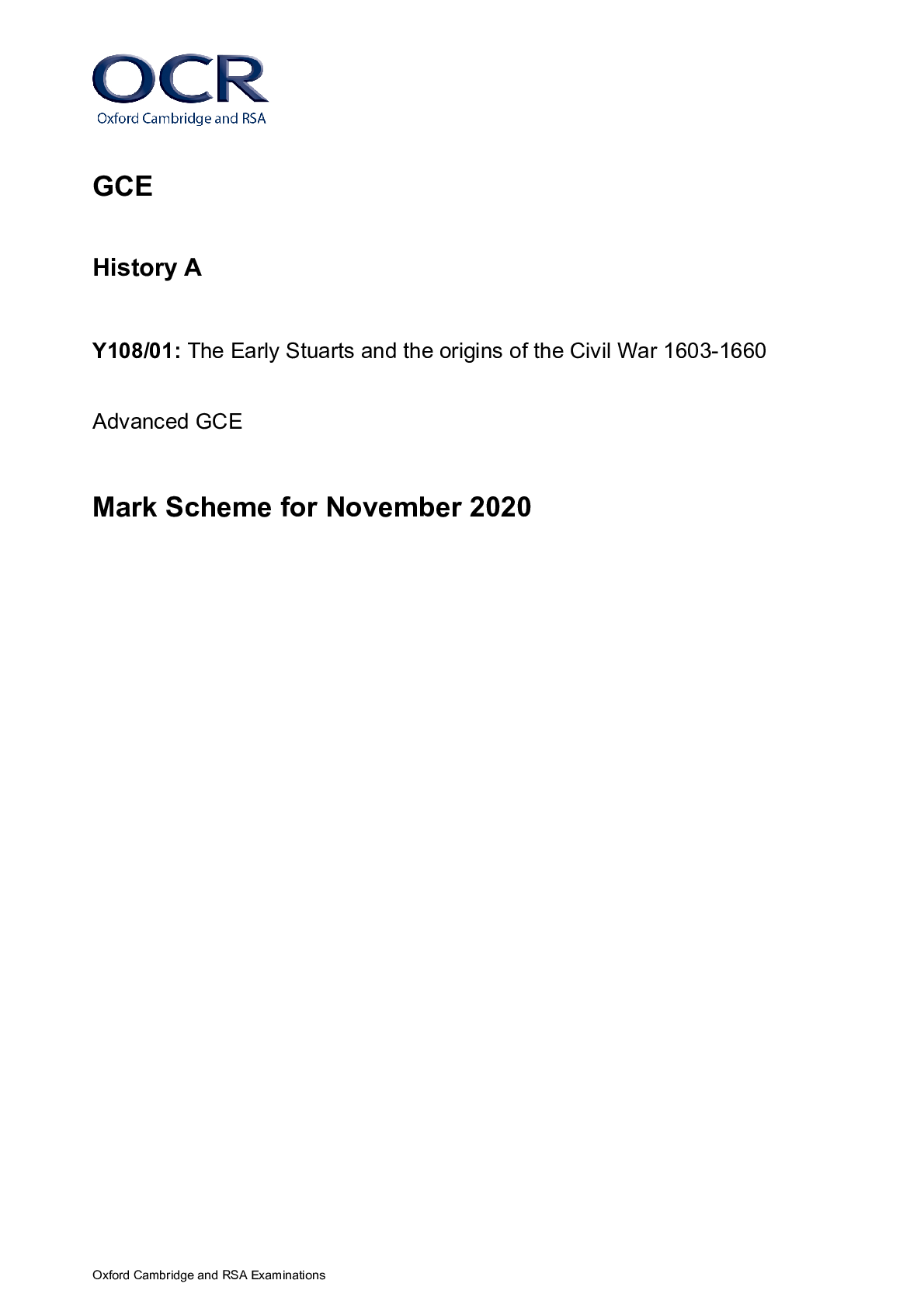
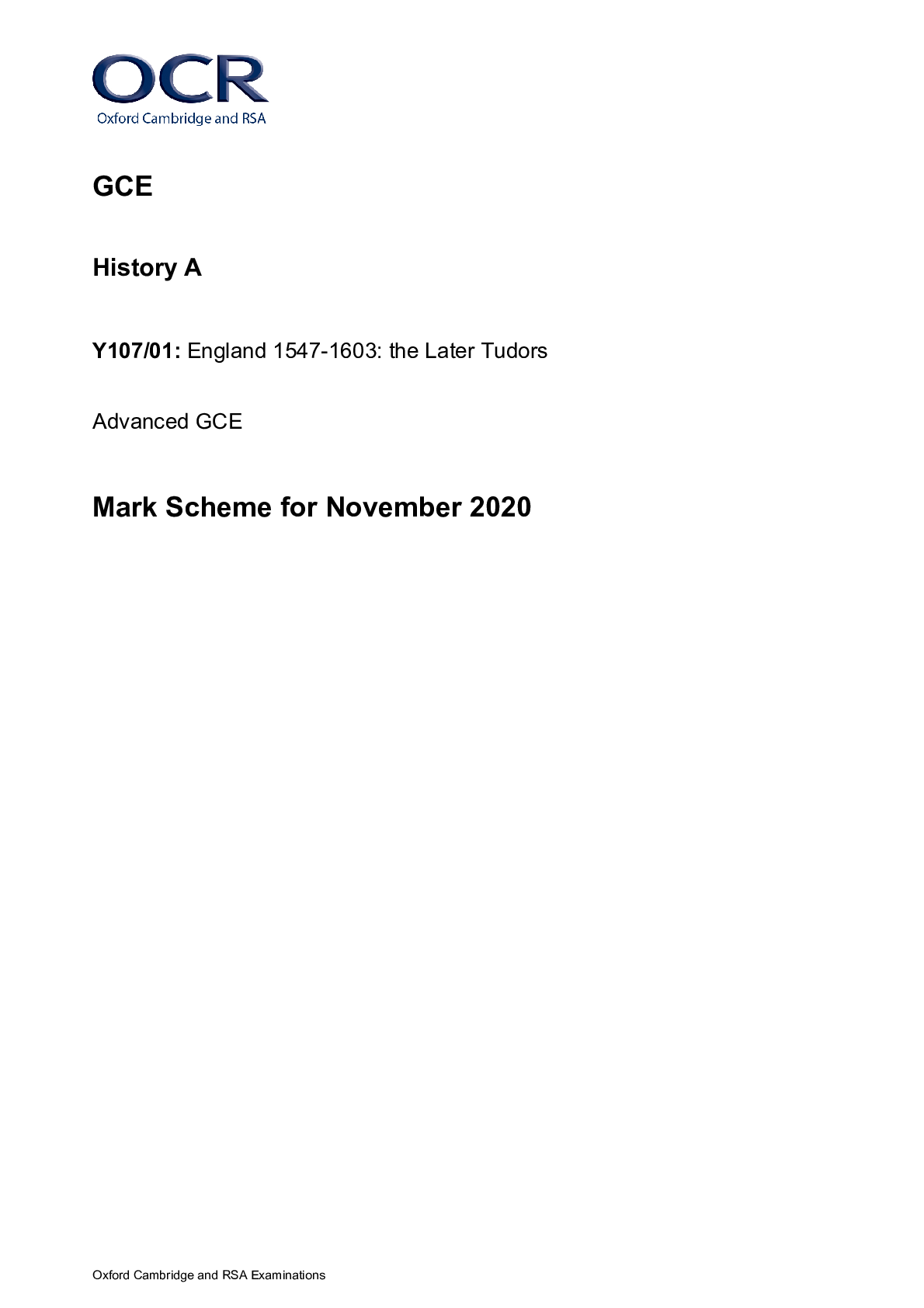
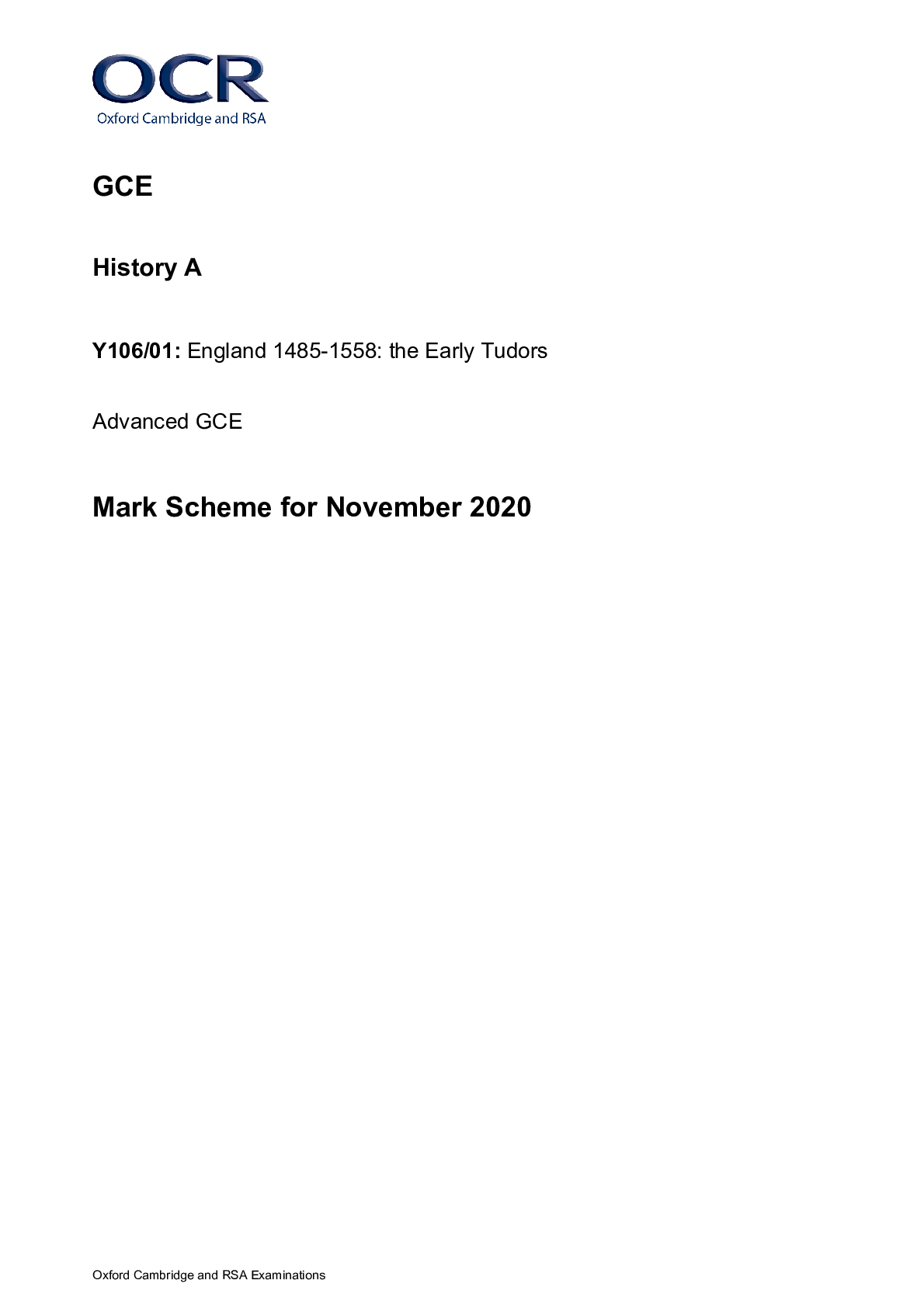
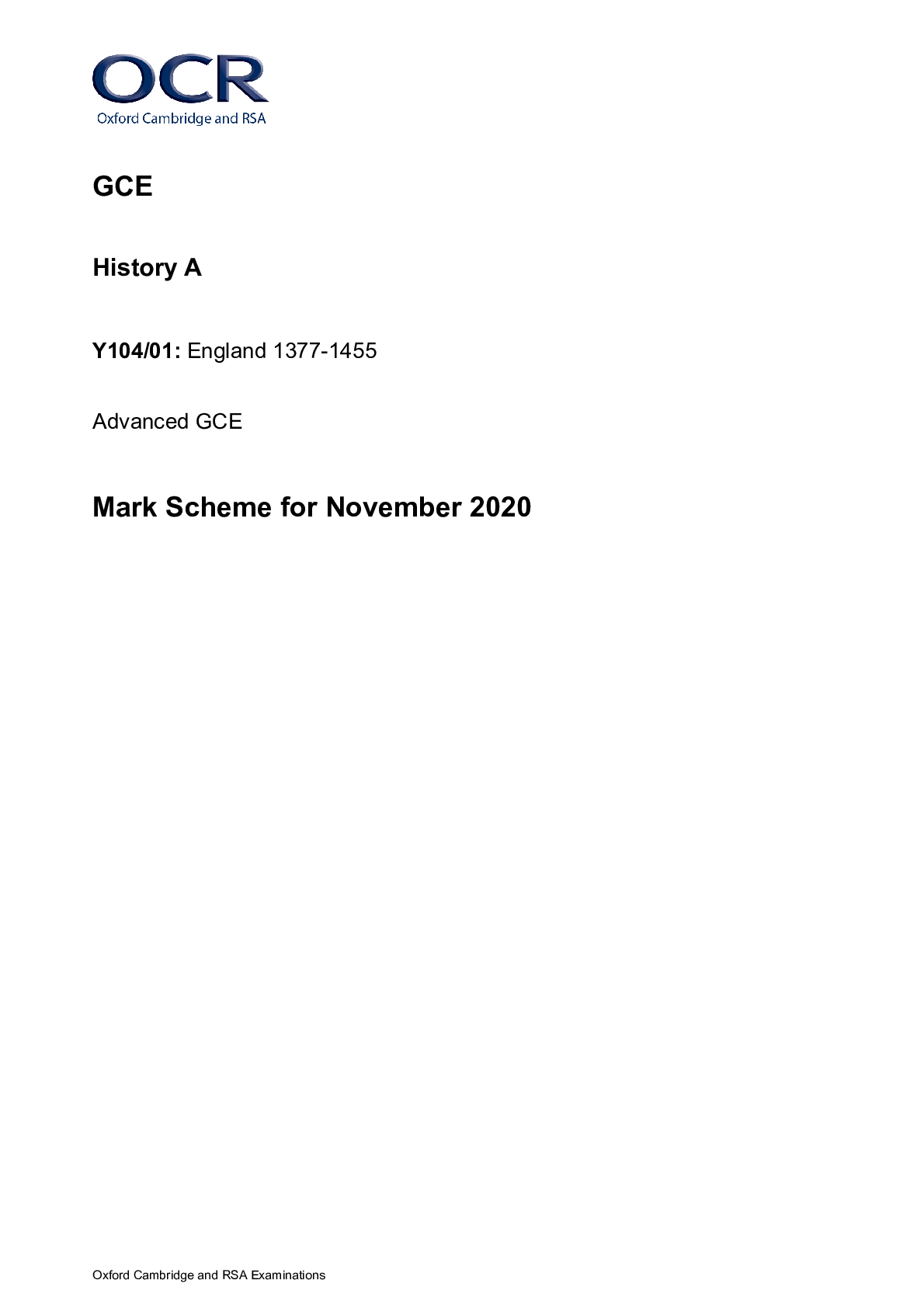
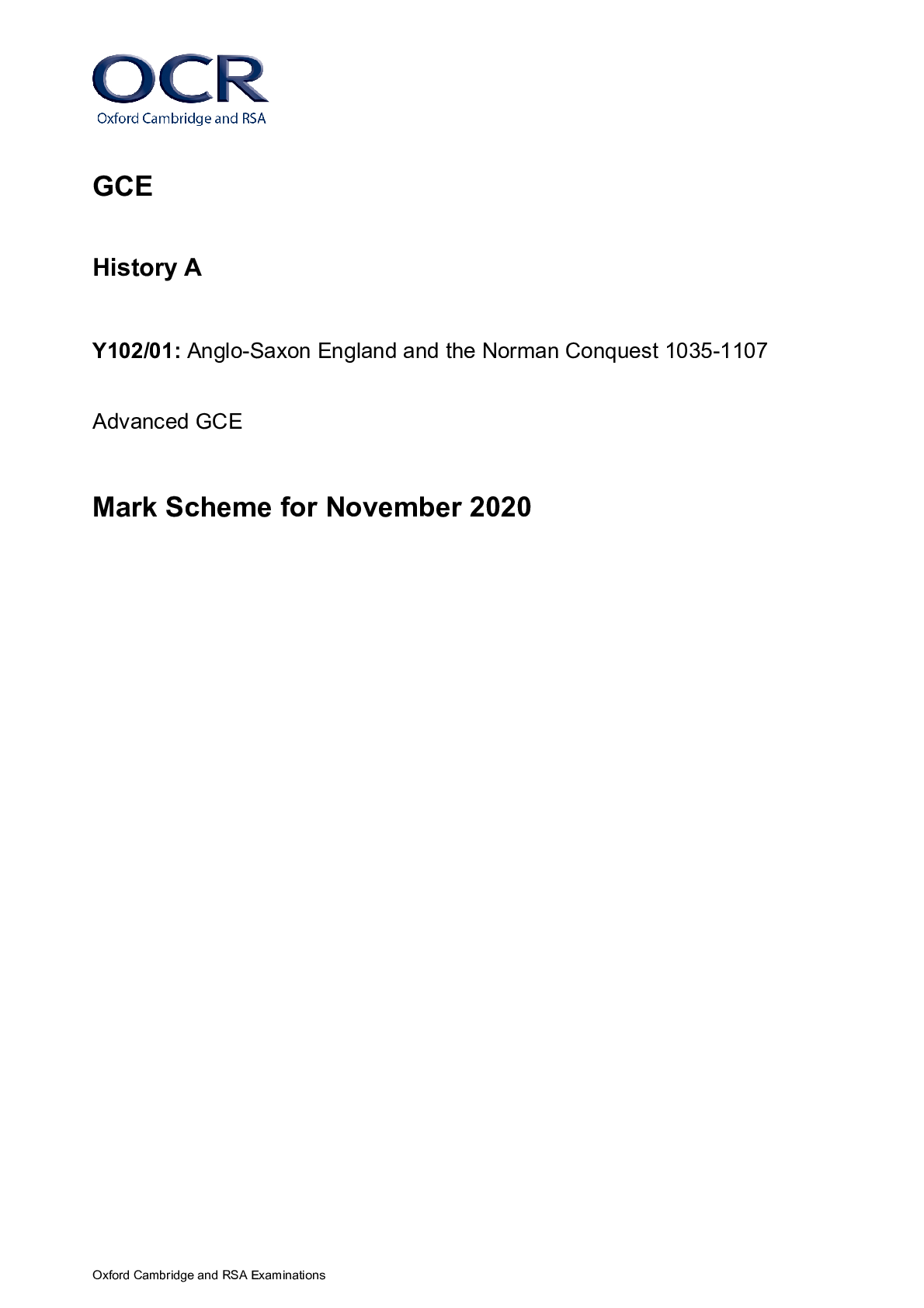
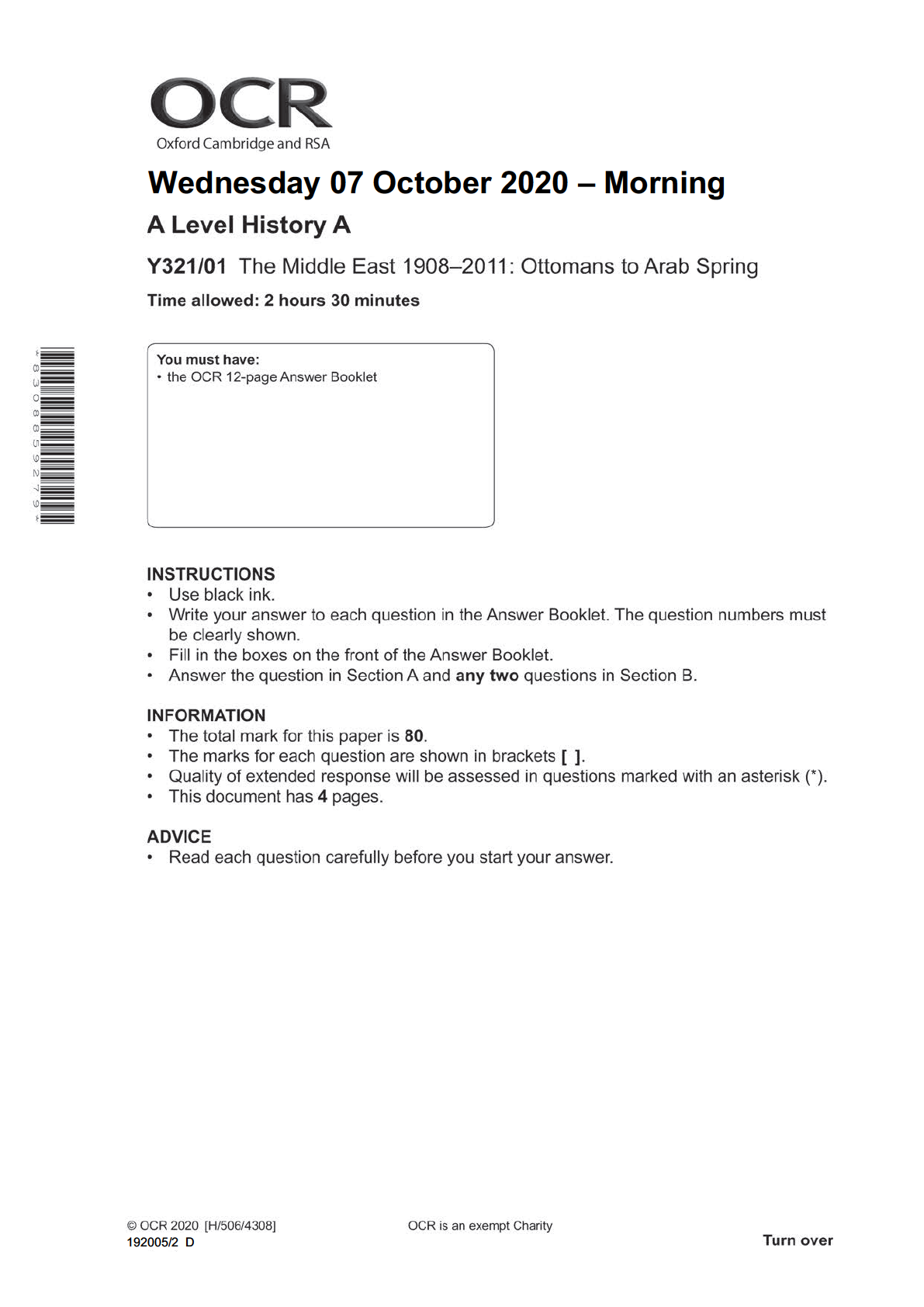
.png)

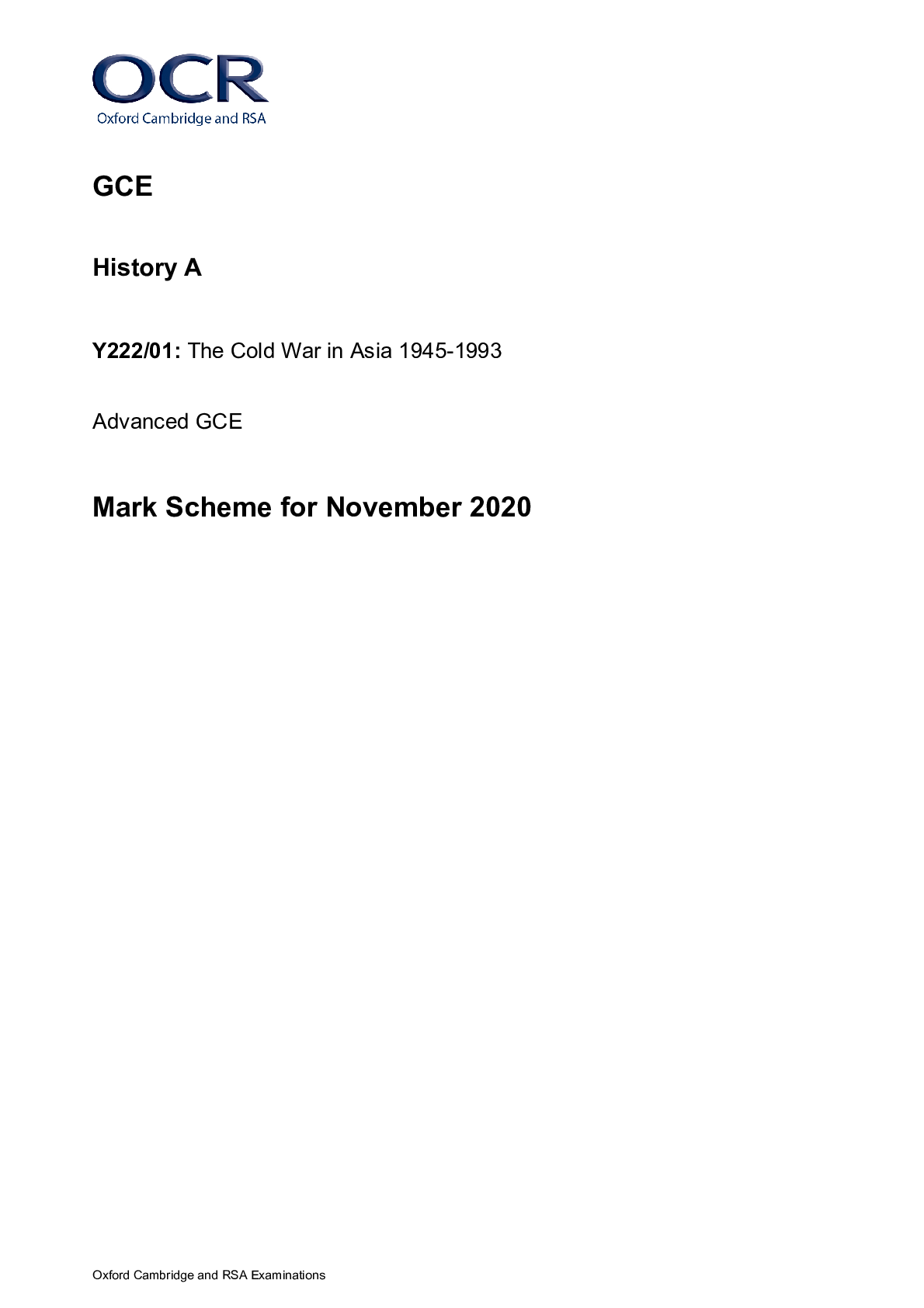
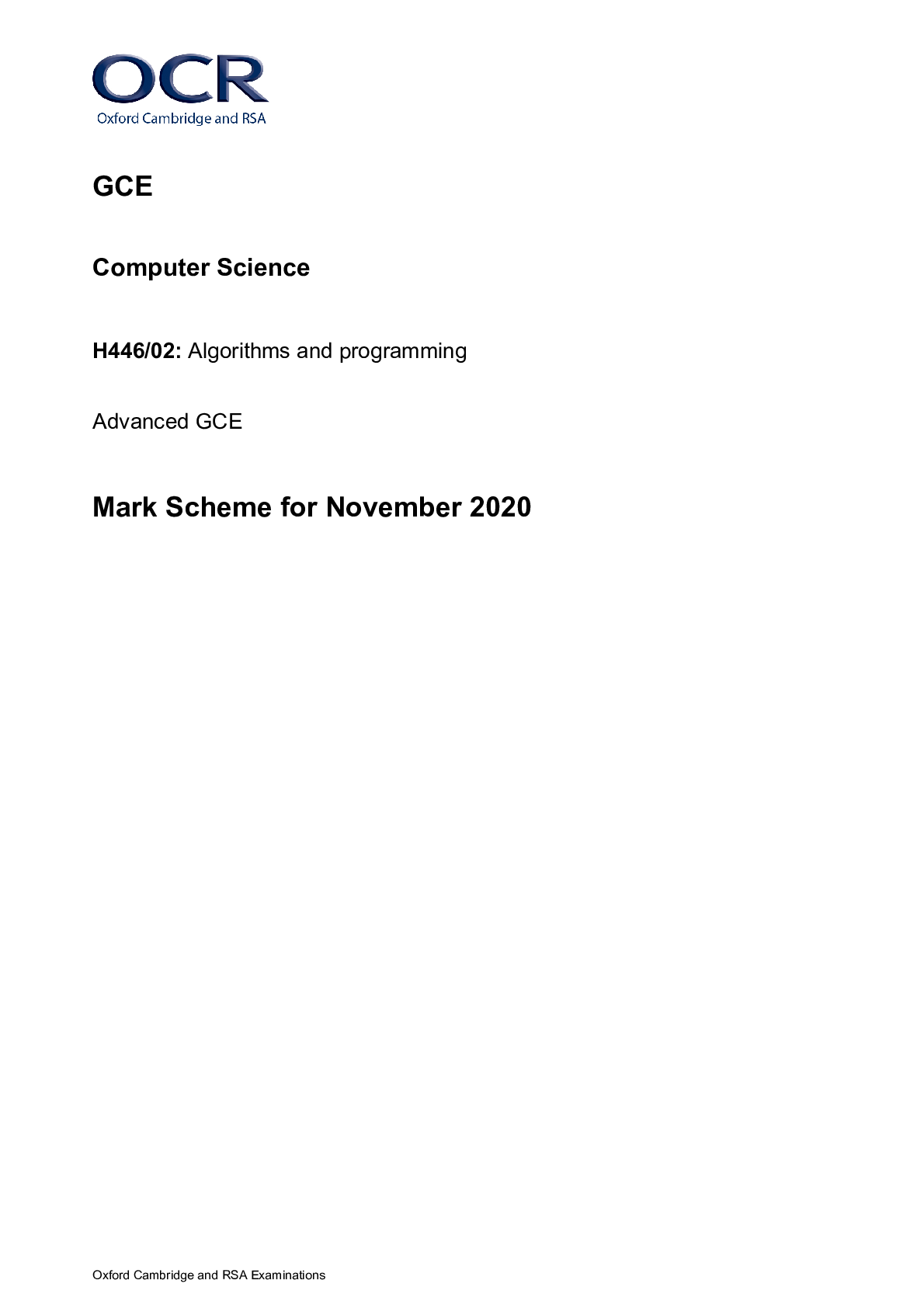
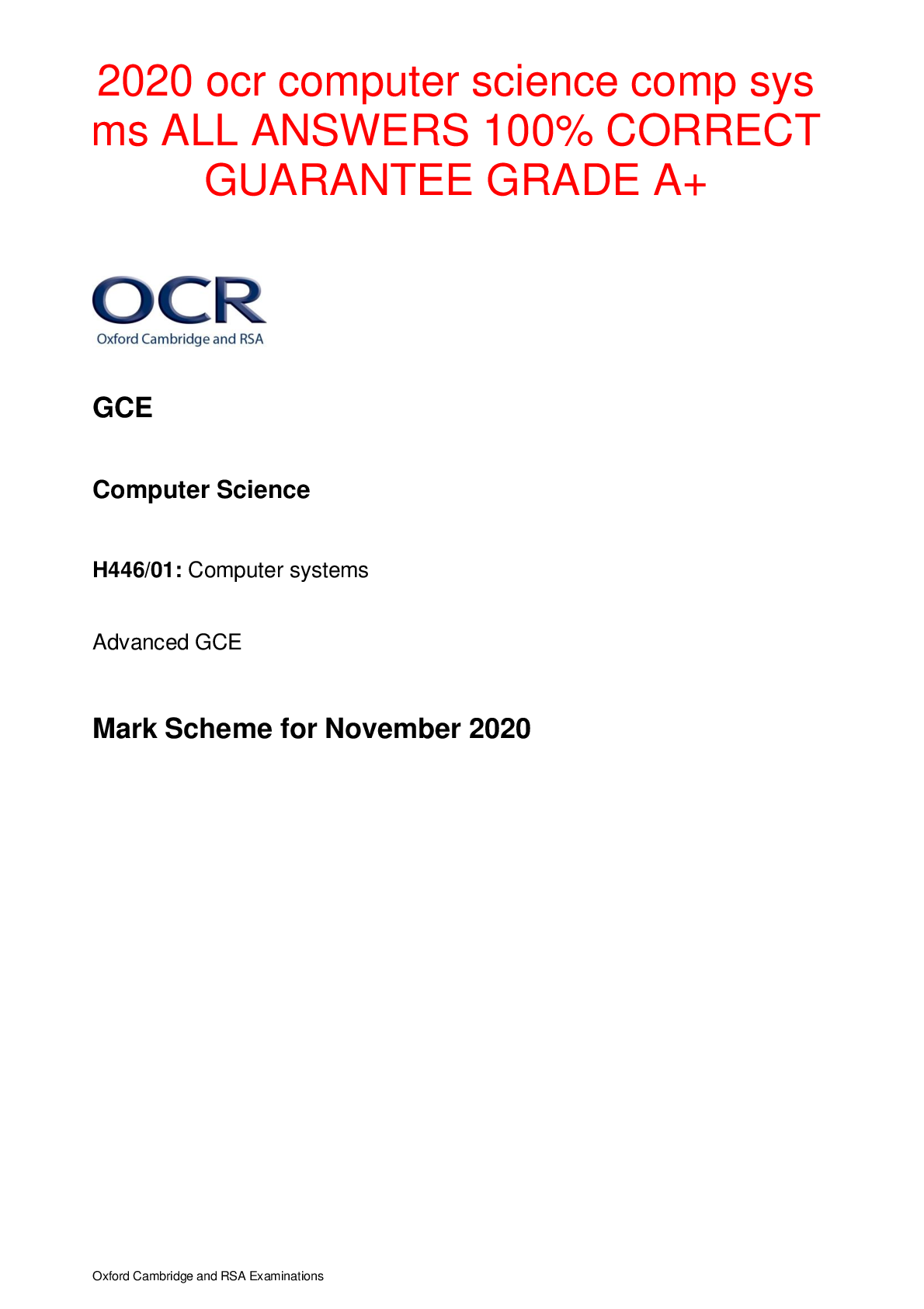

.png)
